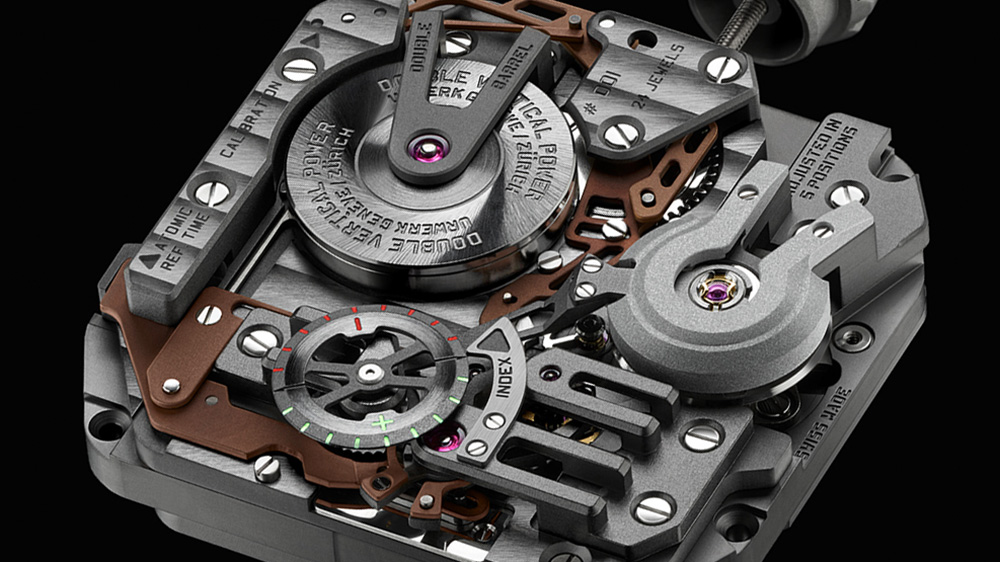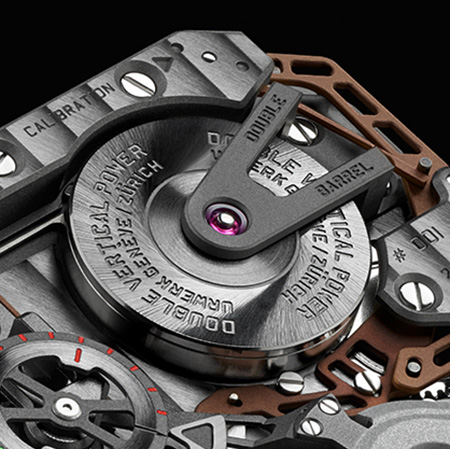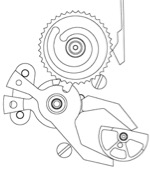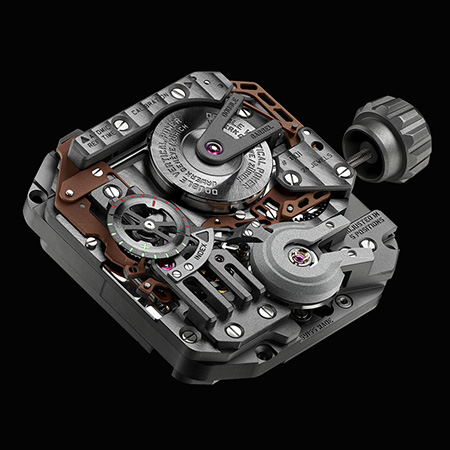
Deep Dive: Understanding the Urwerk AMC
In 1795, Abraham-Louis Breguet wrote an excited letter to his son, in which he described a new type of timekeeper. “I have great pleasure, my friend,” the letter read, “in telling you that I have made a very important invention, but about which you must be very discreet, even about the idea. I have invented a means of setting a watch to time, and regulating it, without anyone having to do it … then every night on going to bed, you put the watch into the clock. In the morning, or one hour later, it will be exactly to time with the clock. It is not even necessary to open the watch. I expect from this, the greatest promotion of our fame and fortune.”
These were to be the first of a new family of clocks, which were an expression of his fascination with advancing the art of precision timekeeping, as well as his fascination with ingenious mechanical solutions for their own sake – he saw the mechanism as an intellectual entertainment or even an art form. These new clocks, known as sympathique clocks, were made to work with specially designed watches. The clocks would act as master timekeepers and control the rate and time-setting of the watches. The owner would place the watch in a special cradle set into the top of the clock, and at a certain hour, the clock would set the watch to the correct time and adjust the rate of the watch to reduce its gain or loss to a minimum.
The idea of a master clock, which directly controls the accuracy and rate of a slave clock, is now built into the most basic fabric of our lives; our cell phones, smart watches, and indeed many radio-controlled wristwatches, all rely on atomic master clocks, which directly control the time they display. However, the art of making a mechanical watch, which is controlled via a mechanical linkage by a master clock, has been lost for many decades – until now.

The Watch: For almost a decade, Urwerk has been engaged in the uphill task of pushing the limits of mechanical possibilities to make progress in precision timekeeping. This has been a long-term project conducted away from the limelight of the wandering-hour watches. The Urwerk team has enlisted the aid of experts in quantum physics and applied the latest techniques in experimental research, resulting in the development of extremely sophisticated time-measuring instruments.
After the breakthrough of the EMC Electro Mechanical Control watch, the first to display its rate at the touch of a button, Urwerk has continued investing, testing, failing and recovering in its relentless progress. The watch company has now decided it’s time for a glimpse into its latest developments which are bound to raise the pulse of watchmaking enthusiasts.

However, its most ingenious features, though unseen to the unaided eye, are revealed upon close examination of the movement. The watch was designed to fit on and work with its base – an atomic clock also conceived and developed in Urwerk’s workshops. This master clock will rewind the Urwerk wristwatch, set it to the correct time and if necessary adjust its rate. This world first brings together in a single mechanism all the functions of the various sympathique clocks produced by Abraham-Louis Breguet.
The master clock interacts with the watch in three ways:
The first, and perhaps the most challenging technically, involves adjusting the rate of the watch. The rate of a watch is basically how quickly or slowly the balance beats, and ideally a watch should keep to a time standard and have a rate that never varies. In practice, all timekeeping systems show some variation in rate, as no oscillator is perfectly stable, mechanical oscillators being inherently less stable than those of an atomic clock. In the AMC watch, Urwerk has found a way for an atomic clock to set a watch to an atomic time standard.
Ordinarily, it is a watchmaker’s task to adjust the rate of a watch by shifting the fast/slow index, which controls the effective length of the balance spring. If a watch is found to be running too fast or too slow, the index can be moved to make the balance wheel slow down or speed up. To adjust the rate of the watch, the master clock needs a mechanism to read the time of the watch, compare it to atomic time and adjust the rate fast or slow accordingly.

If the time of the atomic clock and that of the watch are exactly synchronized, to the second, the jaws of the calipers fall on the outermost tips of the cam simultaneously. However, if the time is not exactly synchronized, one or the other of the jaws of the caliper will fall further than the other. This causes the cam to rotate as well. Because of the shape of the cam, only one of the two caliper jaws will move.
Each jaw has a tooth on its central pivot, which engages a toothed wheel with a spiral cutout, moving it either clockwise or counter clockwise. A peg at the end of the index lever rides in the spiral cutout. When the spiral turns, the peg shifts the index lever to speed up or slow down the rate of the watch. The wheel with the spiral cutout is held by a jumper spring against its teeth; each tooth represents an adjustment, plus or minus, of about two seconds a day.

In contrast to the very unusual mechanism for automatic rate adjustment, the mechanism for synchronizing seconds and minutes will be familiar to anyone who understands how the reset-to-zero mechanism for a chronograph works.
The mechanism to set the minutes and seconds, like that for the rate adjustment, is activated by a pusher triggered by the atomic clock at a certain time. The pusher moves a system of two levers, the last of which has hammers that fall on heart-shaped cams. The heartpiece for the seconds display is on the seconds wheel of the movement, while rotation of the heartpiece for the minutes is transmitted to the minutes hand via an intermediary wheel. As in a conventional chronograph, the heartpieces rotate under the pressure of the hammers until they come to rest with the faces of the hammers at the lowest point of the cams, which corresponds to the zero position for both the seconds wheel and the minutes hand. The watch is now synchronized with the clock.

A Living Museum of Horology: The AMC clock and watch are unique in the history of horology. Each represents in its own way, the peak of evolution of a particular approach to keeping time. The watch represents the tradition of mechanical horology. The combination of balance, balance spring, and lever escapement has been continuously refined over hundreds of years, and the conceptual basis of these components reaches even further back, to the first pendulum clocks of the 17th century.
The atomic clock, on the other hand, represents the cutting edge of modern timekeeping technology. The ability of atomic clocks to produce rates so stable that the clock does not vary by a second even over millions of years, is not only a technological triumph, but essential to advances in science, as well to navigation with GPS signals, which fix one’s position with unprecedented accuracy.
In creating the AMC clock and watch, Urwerk has created a physical marriage between these two approaches to chronometry. AMC is thus not just a fascinating combination of electronic, atomic, and mechanical systems; it is a union of all three that celebrates the fascination of time itself.
To Be Continued …
